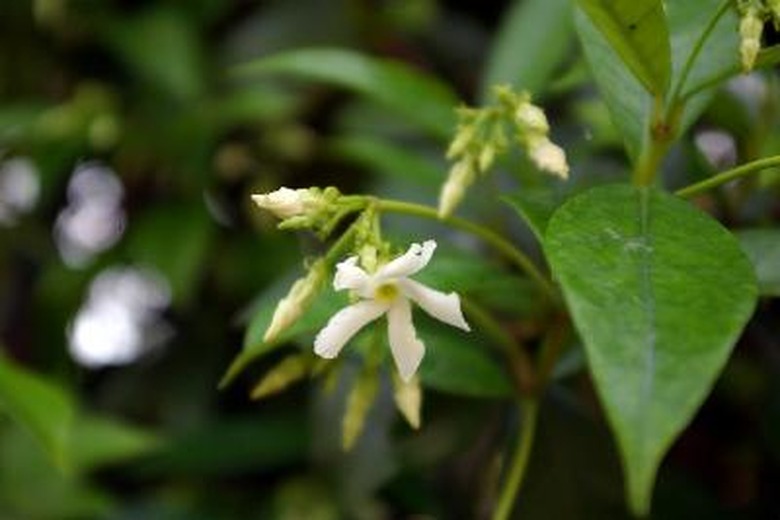When To Prune Night Blooming Jasmine
Night-blooming jasmine is a fragrant, flowering shrub. The white, tube-like flowers are tiny, but the scent is encompassing and vast. The sweet perfume is most noticeable in the evenings and early morning. The plant is not particularly impressive when not in bloom, but is an evergreen in most climates with thick glossy green leaves. The shrub is originally from the Caribbean and requires warm temperatures in zones 8 to 11. Pruning is a necessary chore to keep the plant tidy and encourage new growth.
Characteristics
Night-blooming jasmine is also referred to as jessamine and produces a mounded shrub composed of vine-like branches. It is a rather untidy plant unless carefully trimmed to keep it compact. The tiny flowers open to small white stars in spring and summer. The plant has a wide tolerance of different soils and requires bright sunlight for best performance. Night-blooming jasmine fruit and flowers are toxic and the plant is a member of the nightshade family.
Pruning
The jasmine should be pruned when flowering has finished. Pruning in September is ideal to promote lush new growth and correct the shape. The jasmine can get to 12 feet in height if not pruned down. The plant can also be cut back to 3 feet from the ground annually to force new healthy shoots and prolific blooms. The plant can be trained onto a frame or trellis to present a unique shape. An alternative to a full pruning is to tip prune the stems back 3 or 4 inches to increase growth in young plants.
Propagation
"Queen of the night" is another epithet bestowed upon the night-blooming jasmine. The plant can be started from seed but the most common method is from a cutting. Cuttings should be taken in late summer after the blooms are finished. A 3- to 4-inch section of the stem is cut and the leaves are removed from one inch at the cut end. Rooting hormone can be used to enhance establishment and the cutting is planted in a mostly soil-less medium. Cuttings root quickest if held in a low-light room for at least a week and then they can be introduced to gradually brighter light. Warmth and water are crucial as the plant roots.
Care for Night Blooming Jasmine
This plant needs constant moisture and a bright sunny planting area. The soil pH for jasmine is between 5.5 and 6.5 and should be checked with a soil test before the plant is placed in the soil. The soil can be amended with lime to sweeten it or make it more base, and with sulfur to add acidity. Rich compost incorporated into the planting hole will increase moisture retention and adds nutrients. Spread a 2- to 3-inch layer of mulch around the base of the plant out to the root ends to prevent weeds and insulate the jasmine.
